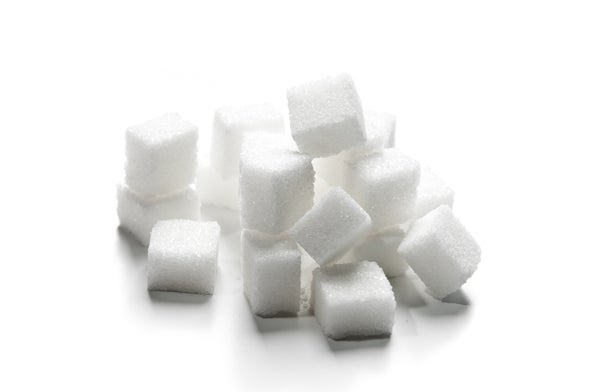(单词翻译:单击)
听力文本
This is Scientific American — 60-Second Science. I'm Karen Hopkin.
We all know that stuffing our faces with sweet treats is not good for us. In part because it's bad for the health-promoting bacteria that inhabit our intestines. Now, researchers have figured out how simple sugars wipe out a particular strain of beneficial gut microbes.
"The underlying assumption that existed in the literature was that simple sugars such as fructose and sucrose which are prevalent in Western diet are not good for humans."
Yale professor of Microbial Pathogenesis Eduardo Groisman, who led the study.
Simple sugars...like those in high fructose corn syrup or the table sugar formally known as sucrose...were thought to be absorbed in the small intestine, so a lot of our gut bacteria would never actually be exposed to them.
Because fiber and complex carbs, made of long chains of sugar molecules, are harder to digest...they make it all the way to the large intestine, where they promote the growth of good bugs like Bacteroides thetaiotaomicron...a microbe found in individuals who are healthy and lean.

"But now what our work actually shows is that both fructose and sucrose do make it to the colon where the microbiota exist. And second that these sugars impact a good bacterium even though nutrition is not involved."
In other words, the bacteria are not using fructose and sucrose as food. Instead, the sugars serve as signals that shut down production of a protein that beneficial Bacteroides need to colonize the intestine. The findings appear in the Proceedings of the National Academy of Sciences.
Groisman says he'd like to explore whether complex polysaccharides can save Bacteroides from this sugary death sentence. Because then maybe we can eat cake and have our gut bugs too.
Thanks for listening for Scientific American — 60-Second Science. I'm Karen Hopkin.
参考译文
这里是科学美国人——60秒科学。我是凯伦·霍普金。
我们都知道,吃太多甜食对我们的身体没有好处。部分原因是甜食会破坏我们肠道内有益于健康的细菌。现在,研究人员已经知道单糖消灭肠道内一种特殊微生物的方式。
“文献中的基本假设是,西方饮食中普遍存在的果糖和蔗糖不利于人类健康。”
领导这项研究的耶鲁大学微生物病原学教授爱德华多·格罗伊斯曼说到。
人们此前认为,高果糖玉米糖浆或正式名称为蔗糖的食糖中的单糖,是在小肠中被吸收,因此肠道中的大量细菌永远不会接触到单糖。
因为纤维和由长链糖分子构成的复合碳水化合物更难以消化,所以它们会一路进入大肠,在那里促进多形类杆菌等有益细菌的生长,多形类杆菌是在健康苗条人群的肠道内发现的微生物。
“但现在我们的研究实际上表明,果糖和蔗糖确实会进入结肠,而那里存在微生物群。其二,这些单糖对有益细菌产生了影响,尽管其没有为细菌提供养分。”
换句话说,这些细菌不会将果糖和蔗糖当作食物。相反,单糖作为信号,抑制了有益拟杆菌在肠道内生存所需蛋白质的产生。这项研究结果发表在《美国国家科学院院刊》上。
格罗伊斯曼表示,他想探究复合多糖能否使拟杆菌免于这种“甜蜜的死刑判决”。因为这样我们就可以既吃蛋糕,又能保留肠道细菌。
谢谢大家收听科学美国人——60秒科学。我是凯伦·霍普金。
译文为可可英语翻译,未经授权请勿转载!
重点讲解
重点讲解:
1. wipe out 摧毁;毁灭;使灭绝;
One dose of penicillin can wipe out the infection.
一剂青霉素就能消除感染。
2. be exposed to 使暴露于(险境);使遭受(危险或不快);
They had not been exposed to most diseases common to urban populations.
城市人口中多数常见的疾病他们都没有接触到。
3. be made of (由…)构成的;(由…)制成的;
The frame of an airship is made of light but strong metal.
飞船的框架是用轻而坚固的金属制成的。
4. shut down (使)(工厂、公司等)关闭,歇业,停业;
They shut down the nuclear reactor for safety reasons.
出于安全原因他们关闭了核反应堆。


